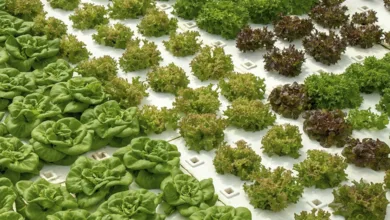Chew on this: Is Food ‘Friend or Foe’ for Better Health?

In my daily discussions with patients and families about their food choices and habits, a worrisome theme emerges. Many people see food as the enemy. The often useless lifestyle advice from doctors is to eat less and exercise more. I disagree with that counseling approach; medical research continues to uncover new findings about the complexity of what makes weight loss and maintenance so difficult for some people. Hint: It’s far more complicated than “calories in, calories out.” But food still must be a major component of the discussion. What, then, should people do about it?
First, we have to restore our relationship with food. For most people, that relationship is more complex than the one they have with their mother-in-law! Fundamentally, food is our friend, but our culture’s emphasis on eating high-quality food has diminished, and our health has taken the toll. Repairing the relationship means getting back to the basics – eating whole, unprocessed food that you prepare yourself.
When we say this to patients, we hear, “Real food spoils too quickly. Real food requires more thought and planning. And what does it give me in return?” The short answer is: cancer prevention, heart disease prevention, and decreased risk of Parkinson’s and Alzheimer’s. I could go on and on – the benefits of eating real food definitely outweigh the perceived negatives. And while it’s not easy to modify your lifestyle, it’s absolutely doable.
The good news is I’m not recommending that you “go on a diet.” Rather, I recommend a gradual lifestyle change known as the “Mediterranean diet.” Plus, there’s even better news. A Mediterranean diet can reduce your risk of death from any cause, including cancer and heart disease, by up to 25 percent.
What is the Mediterranean diet?
In general, Mediterranean eating means consuming more plant-based foods, more healthy sources of fat, and more fish; moderating meat consumption; and enjoying the process of preparing and eating food with others. Foods in the Mediterranean diet often are colorful, pleasing to the palette, and enjoyable to eat. Staple foods include:
-
- Avocado
- Fish
- Fruits
- Legumes, such as hummus and beans
- Nuts
- Olive oil
- Vegetables
- Whole grains that are minimally processed
Anyone can adapt Mediterranean dietary principles into their own cultural and personal preferences. When you focus on all the good things that food can bring to your body, you can begin to mend the broken relationship cycle of guilty eating, dieting, regaining lost weight, and dreading your cholesterol lab report. Interestingly, children can have an insightful perspective on food, as my son showed me this year.
What children can teach us about healthy eating
I recently talked with my son and his kindergarten buddies about food. I asked them, “Why do people eat?” Their energetic replies included, “To grow strong and be healthy! For fun! To make your brain work! Because I like it!” We can learn a lot from 5-year-olds, I think. Thus, I propose what I like to call the 90:10 Guideline.
First, we focus on learning about which foods help us to be stronger and healthier – those that optimize our mental function and energy. Following the 90:10 Guideline, these foods should make up about 90 percent of what we eat. We should ask ourselves, “Does this food bring something good to my body?” If so, find creative ways to add it to your daily life, such as incorporating it into recipes you already make (see below for ideas!).
The other 10 percent can be foods that we eat simply for pleasure. We should thoughtfully and mindfully choose the treats that mean something special to us. The key is to make these foods the smaller percentage of what we eat and transition our focus to nourishing foods as the priority.
Recipe ideas from the Goldring Center for Culinary Medicine
UT Southwestern proudly partners with the Goldring Center for Culinary Medicine at Tulane University to enhance the education of our medical students in the role of food in health.
Check out some of the center’s free recipes for ideas to increase your inclusion of plants, spices, and whole grains.
These are a few of my favorites:
Another great resource for information about the health benefits of color foods, such as fruits and vegetables, is the International Food Information Council Foundation. The more we learn about and enjoy preparing and eating healthy foods, the less it feels like work to improve our diets and become stronger and healthier.
Originally published https://utswmed.org/medblog/food-better-health/





